-

Tutorial: Matched Series for SAR Analysis
This worked example considers a publically available set of PPARγ pIC50 data which contains a number of chemical series. Matched Series Analysis is used to identify when a substitution from one series has a high likelihood of improving the binding of another series at PPARγ. This approach is then...
-

Tutorial: MPO Explorer - Profile Builder
In this example we will use the Profile Builder in StarDrop’s MPO Explorer module to derive a multi-parameter scoring profile, based on a data set initially described by Wager et al. [ACS Chem. Neurosci. 1 p. 435 (2010)]. Wager et al. used this data set to develop a multi-parameter optimisation m...
-

Tutorial: MPO Explorer: Sensitivity Analysis
In this example, we will use the Sensitivity Analysis tool in StarDrop’s MPO Explorer module to check if the ranking of compounds in a data set is sensitive to any of the criteria or importance values in a scoring profile. This is important to consider because, if the compounds we would choose ar...
-

Tutorial: Scaffold Hopping with Library Enumeration
In this example we are going to use the library enumeration feature in StarDrop’s Nova module, in combination with R-group analysis, to generate a virtual library representing a potential new lead series. This will be based on a previous series and explore the impact of a change of scaffold and v...
-

Tutorial: Optimising P450 Metabolic Stability
In this example we will explore the feasibility of pursuing a fast-follower for Buspirone, a 5-HT1A ligand used as an anti-anxiolytic therapeutic, which has a known liability due to rapid metabolism by CYP3A4. This example illustrates the use of StarDrop’s P450 metabolism models to explore struct...
-

Tutorial: Addressing Toxicity Risk in Multi-Parameter Optimisation
In this example we will illustrate how knowledge-based predictions of toxicity can be used within a MPO environment to guide the selection and design of compounds with a good balance of properties and reduced risk of toxicity. We will explore a library of compounds with COX2 inhibition data, with...
-

Tutorial: Comparing chemical series with Probabilistic Scoring
This example is taken from a project in which screening of a diverse library resulted in hits from multiple chemistries. Without the resources to follow-up all of the hit chemistries, the project team wished to focus on a small number of series which were most likely to yield high quality leads w...
-

Tutorial: Multi-Parameter Optimisation of 3D SAR
In this example we will explore the multi-parameter optimisation of a series of CDK2 inhibitors, combining a 3D insight into the structure-activity-relationship (SAR) gained from StarDrop’s torch3D™ module and predictions of ADME and physicochemical properties, using StarDrop’s unique Probabilist...
-

Tutorial: Automatic QSAR Model Building and Validation
This tutorial walks through the process of building and validating a QSAR model of Muscarinic Acetlycholine M5 receptor potency using StarDrop's Auto-Modeller.
-

Tutorial: Automatic Generation of New Compound Ideas
The objective in this tutorial is to evolve the chemistry around three lead compounds which have good ADME properties but which have insufficient inhibition of the target, the Serotonin transporter. Using Nova and Probabilistic Scoring we look at how we can generate new ideas for compounds to imp...
-
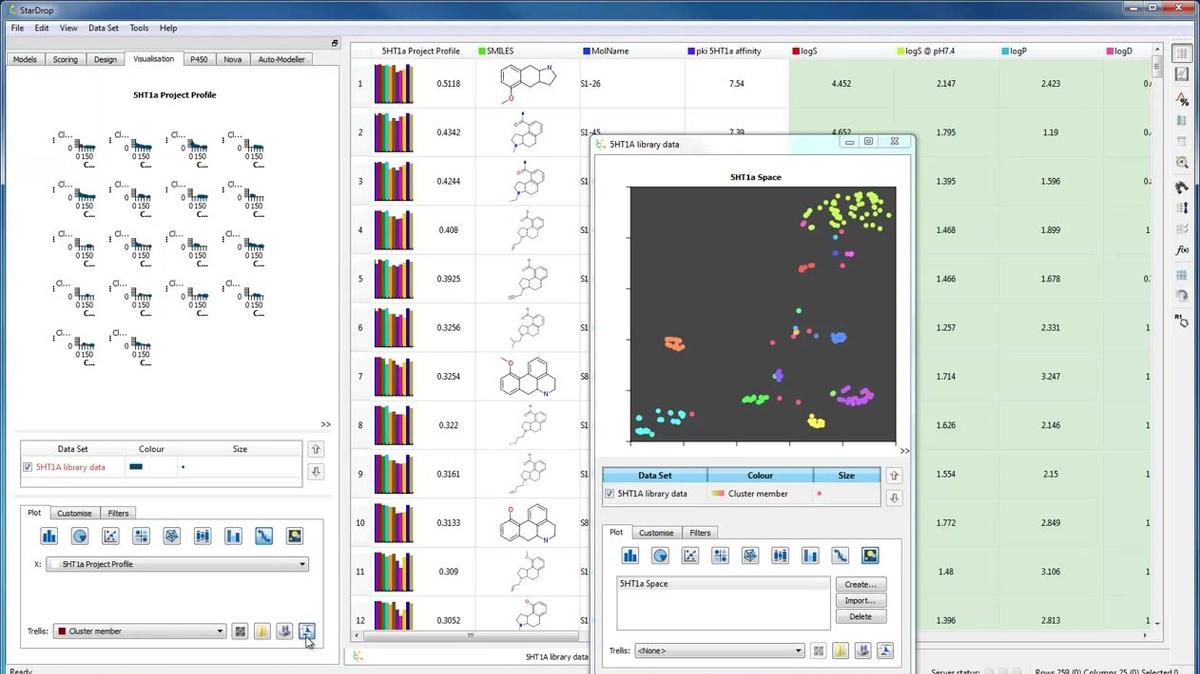
Clustering
The clustering tool makes it easy to identify groups of similar compounds within a dataset based on either their structure or properties. This demo shows how the cluster information can be used with StarDrop's chemical space and data visualisation to easily compare chemical series within a librar...
-
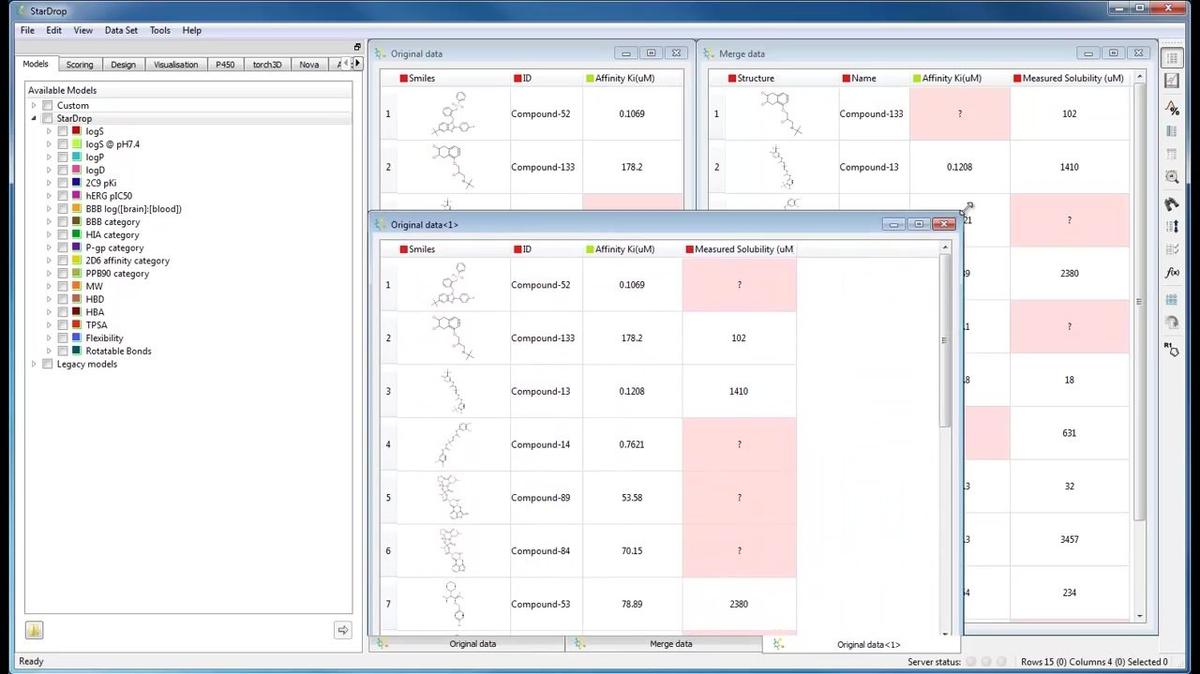
Merging data sets
Do you ever have trouble merging new experimental data back in with all the other information you have for your project? StarDrop makes this very easy. Take a look at this quick introduction...
-
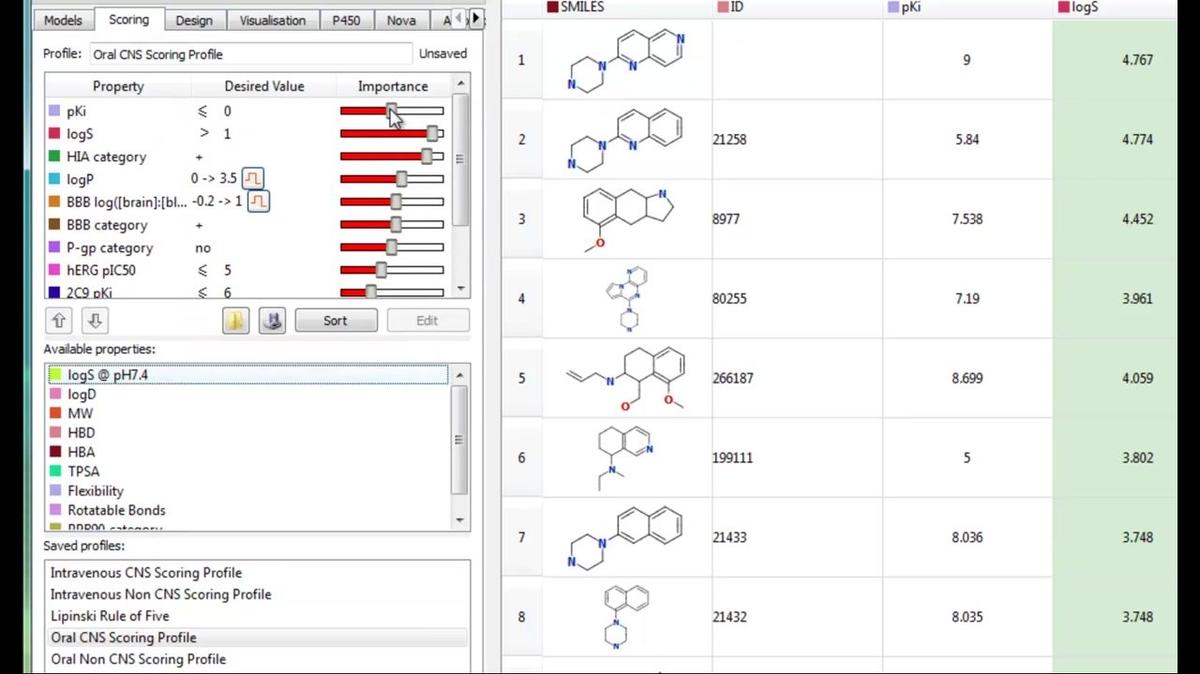
StarDrop Probabilistic Scoring
StarDrop's probabilistic scoring is a powerful multi-parameter optimisation (MPO) technique but we've made it really easy to use so that you can find out which compounds have the best balance of properties. Take a look...
-
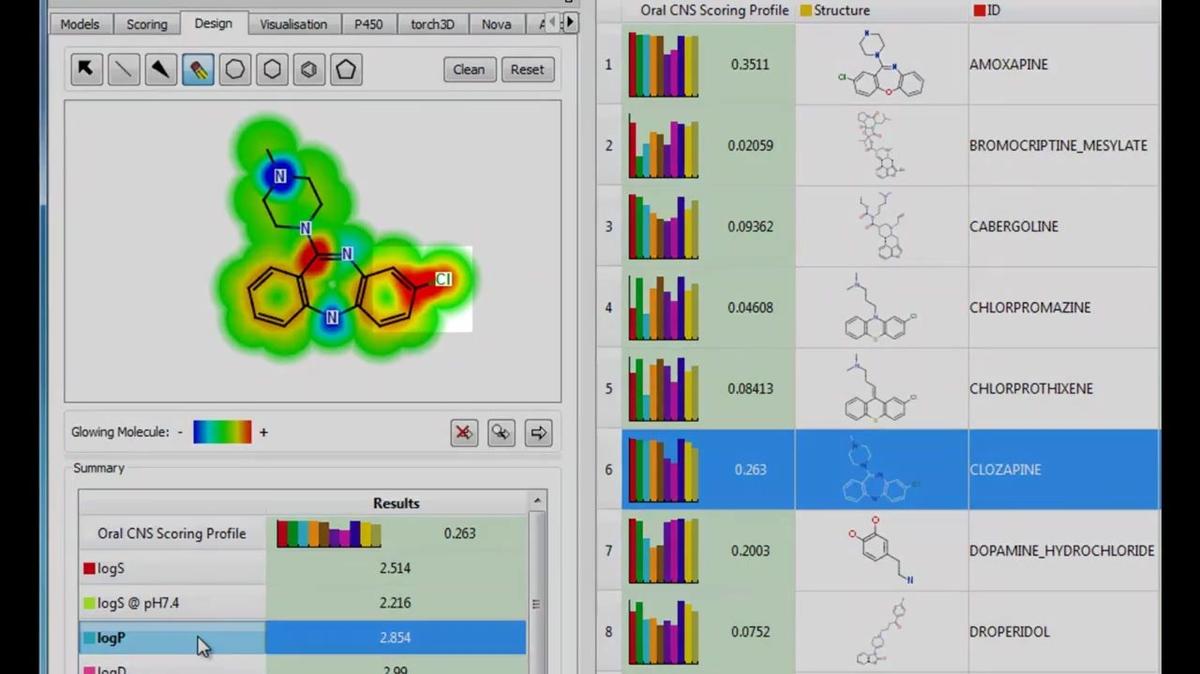
Glowing Molecule
StarDrop's Glowing Molecule brings model predictions to life, showing you which parts of a molecule are having the biggest impact on its predicted properties. This quick introduction shows you how...
-
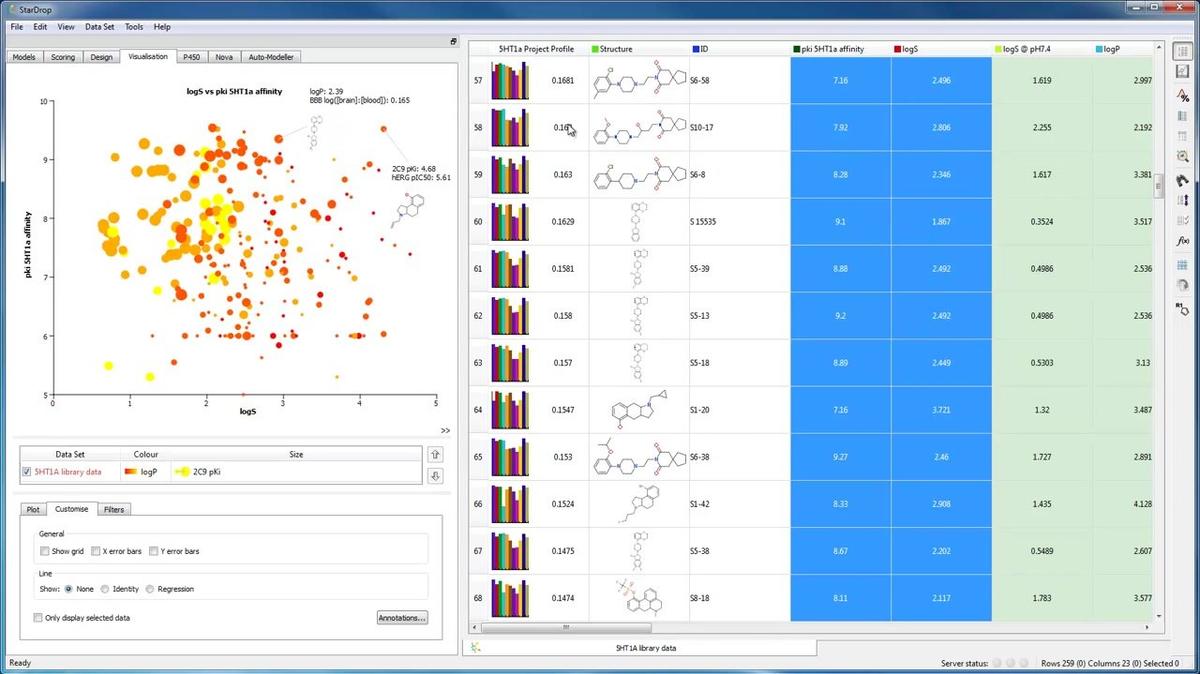
Annotating Visualisations
This short demo shows you how you can add annotations to your data visualisations within StarDrop.
-
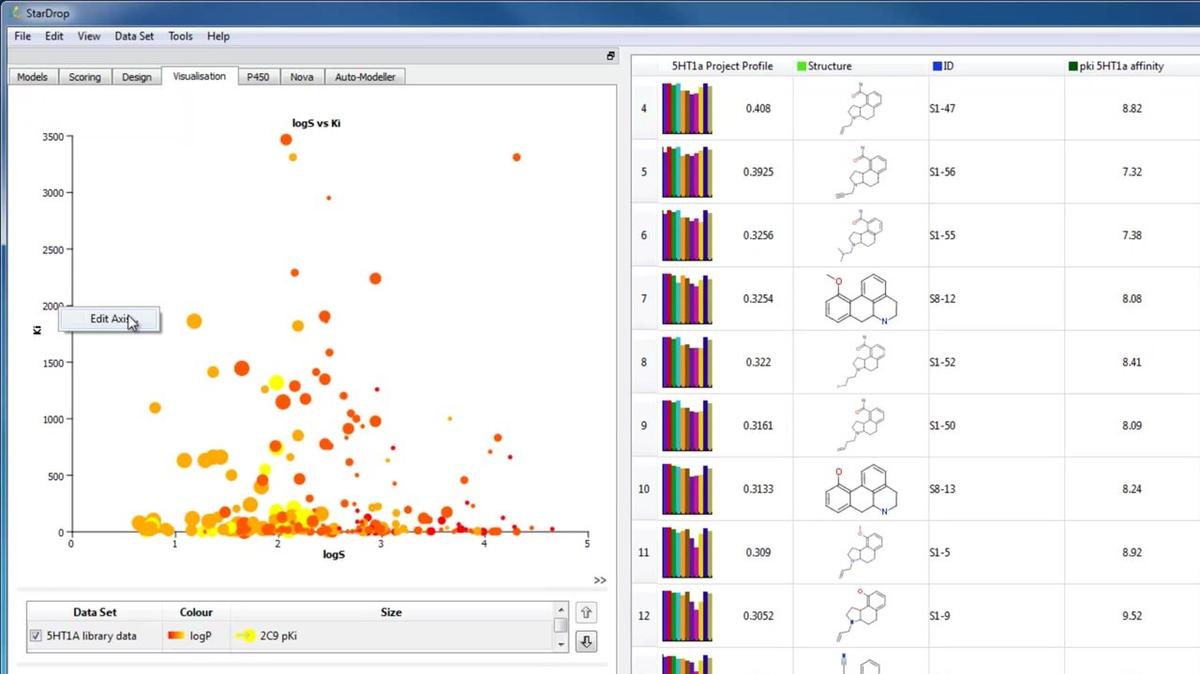
Log Scales
This short demo shows you how you can use log scales when setting up axes or colours within your StarDrop data visualisations.
-
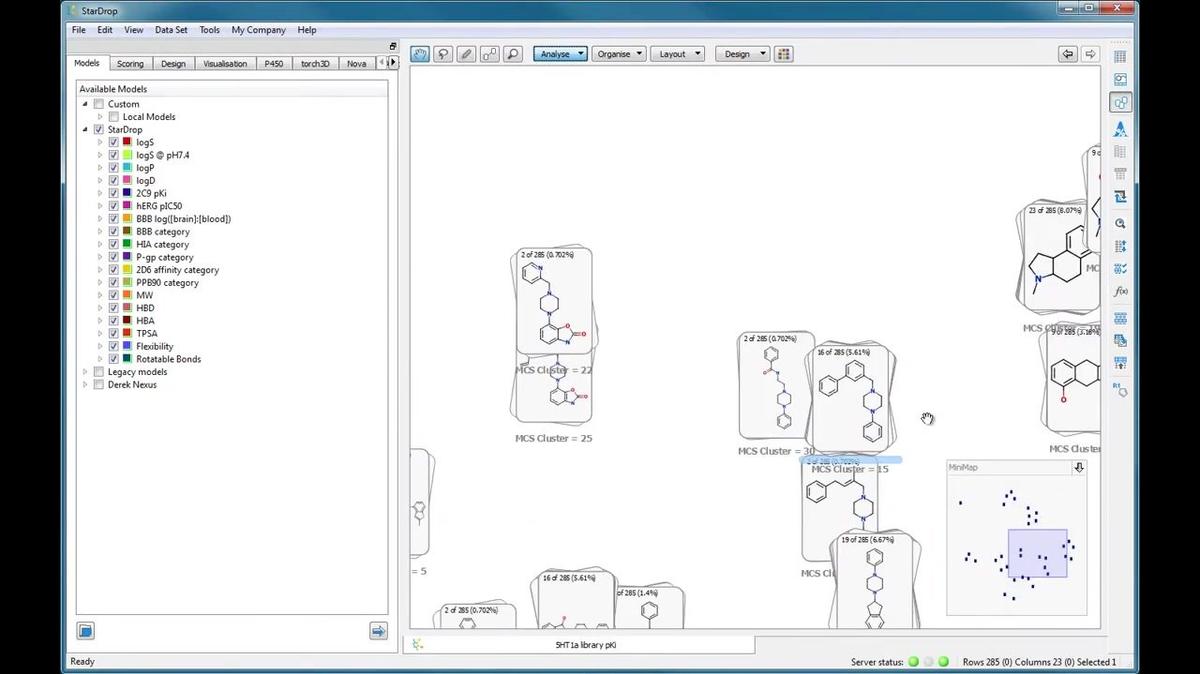
Clustering
This short video gives an introduction to the Clustering tool in StarDrop and how you can interact with the results in Card View
-
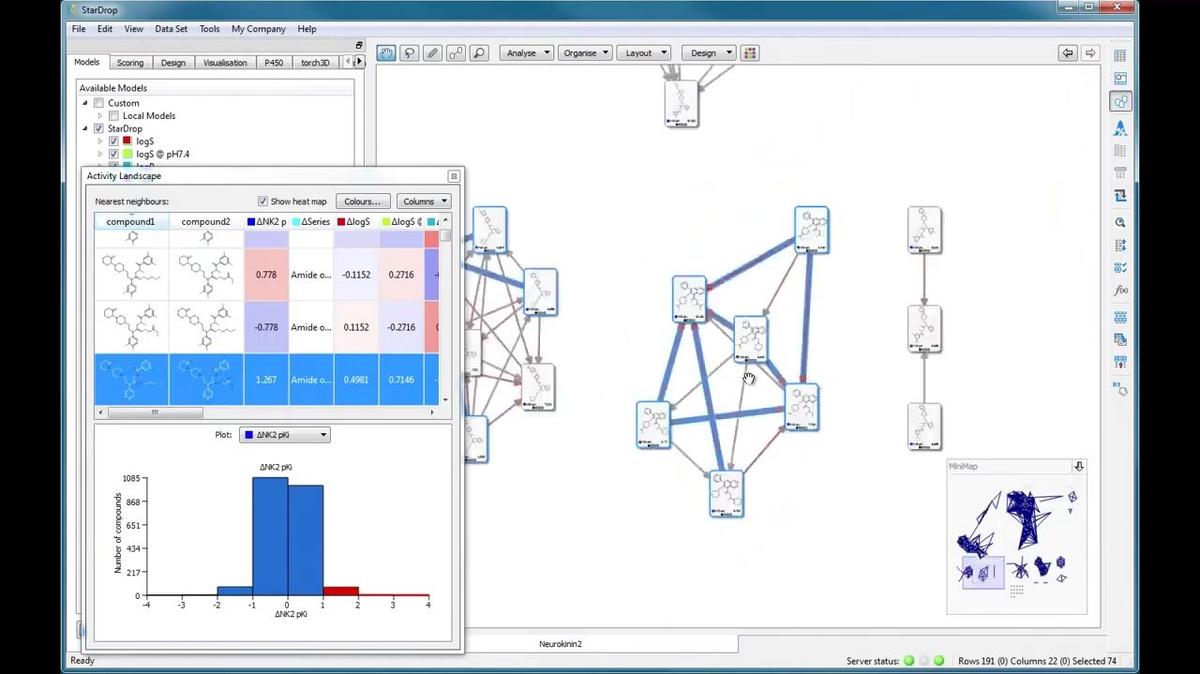
Activity Landscape Analysis
This short video gives an introduction to the Activity Landscape analysis tool in StarDrop and how you can view and interact with the results in Card View.
-
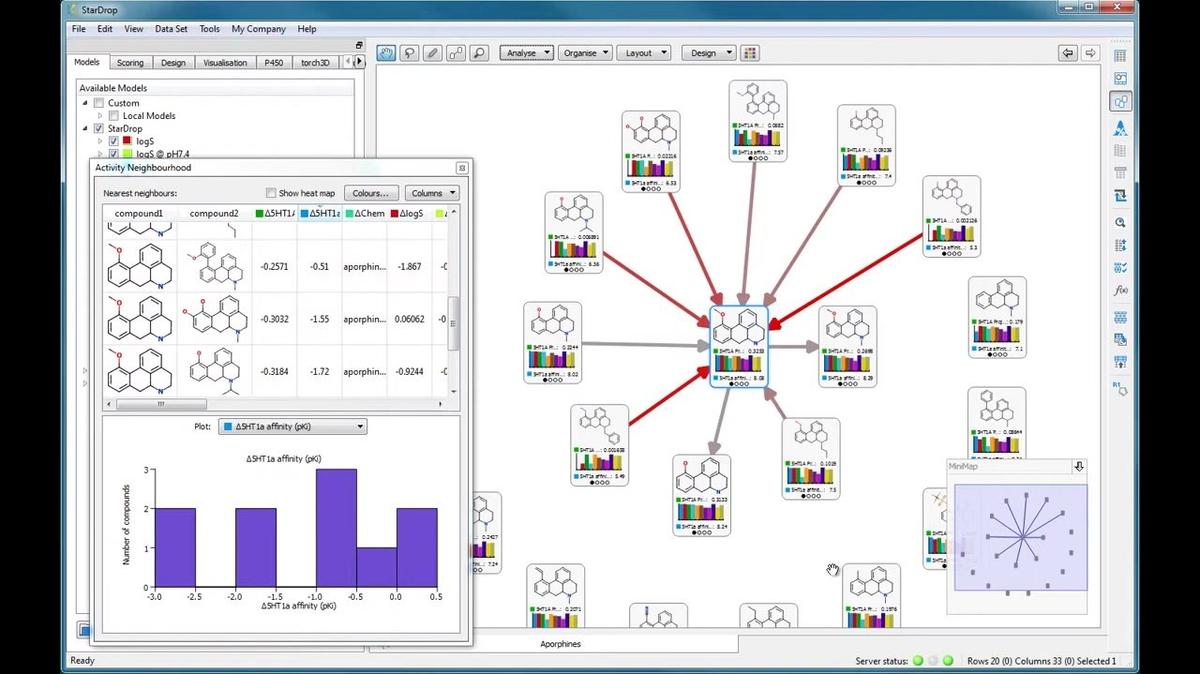
Activity Neighbourhood Analysis
This short video gives an introduction to the Activity Neighbourhood analysis tool in StarDrop's Card View.
-
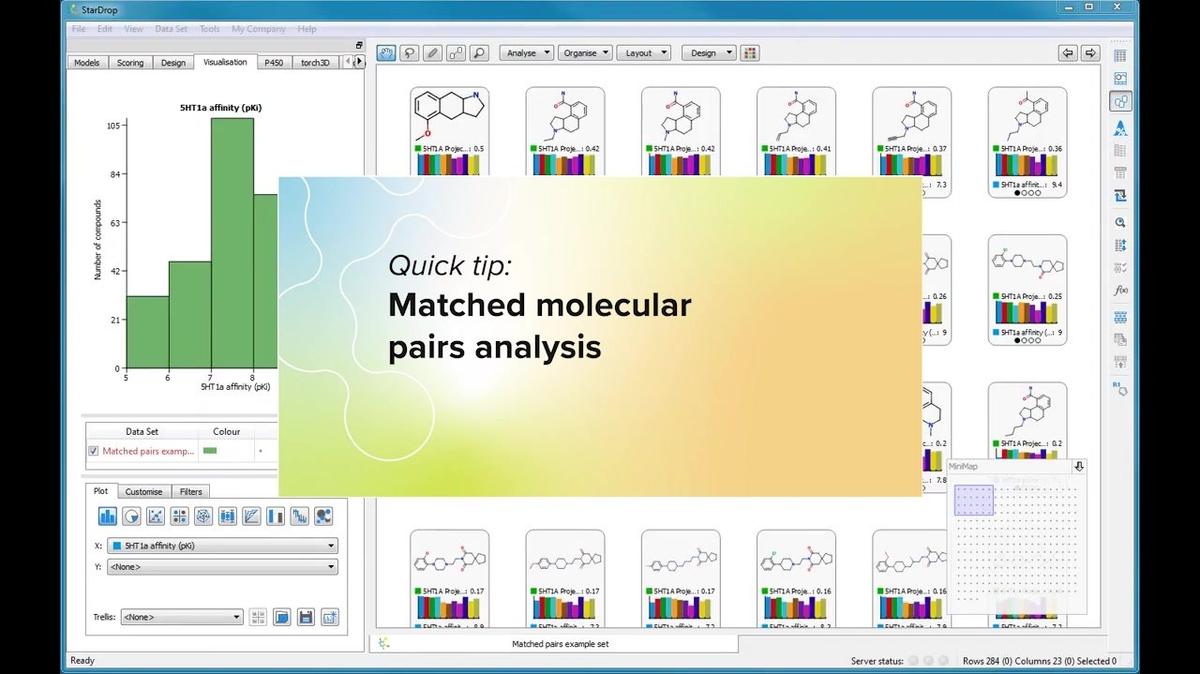
Matched Molecular Pair Analysis
This short video gives an introduction to the Matched Molecular Pair Analysis tool in StarDrop and how you can interact with the results in Card View. If you are interested in Matched Molecular Pair Analysis, you may also like to see the tutorial on Matched Series Analysis, which goes beyond matc...
-
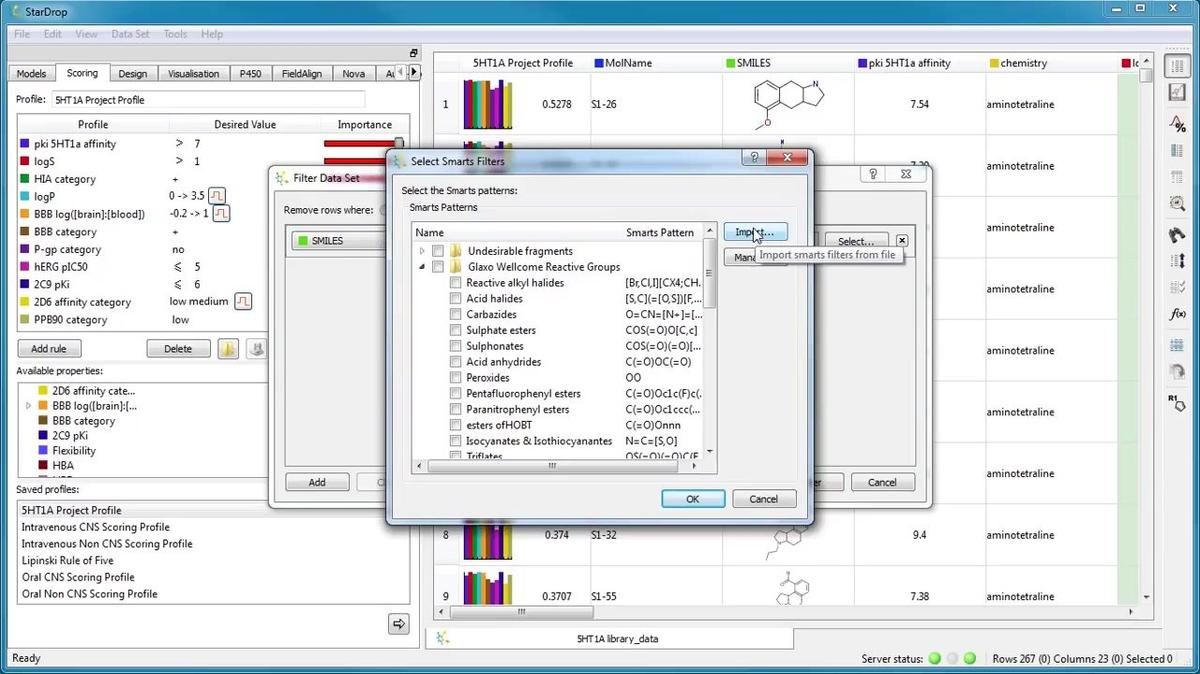
Dataset Filtering
This short movie illustrates how to use the data set filtering tool withing StarDrop to remove compounds with unwanted substructures or property values from your data set.
-
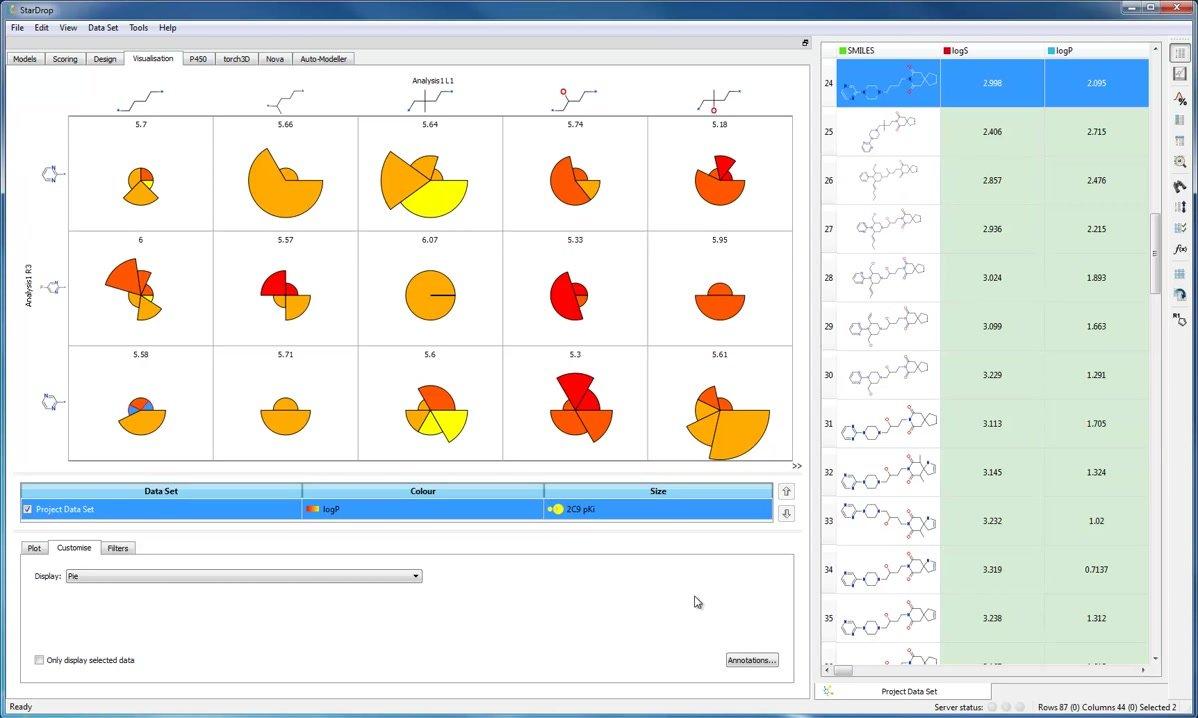
Information Rich SAR Visualisation
This short movie illustrates how to create information-rich SAR plots, including pie charts, histograms or radar plots to view property distributions by R-group in StarDrop's data visualisation tab.
-
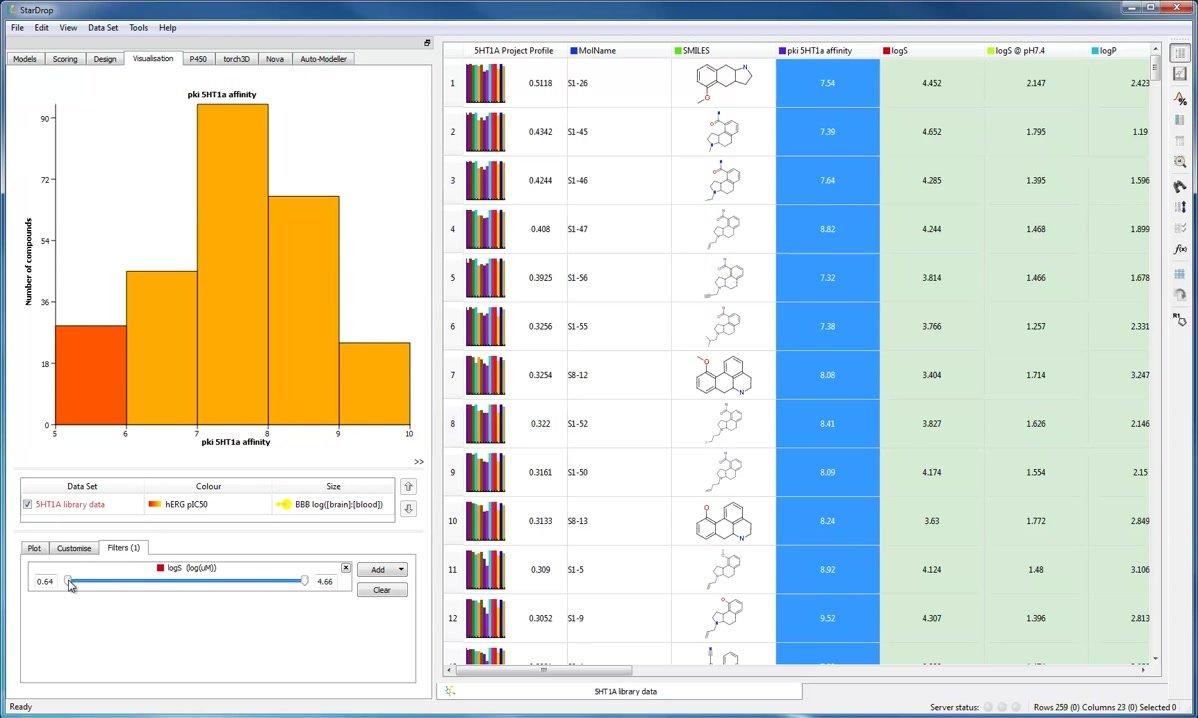
Visual Filtering
StarDrop's visual filtering tool enables you to filter the data displayed in your graphs and plots interactively. This demonstration shows how you can apply filters for one or more properties in your data set to quickly focus on the most interesting compounds.
-
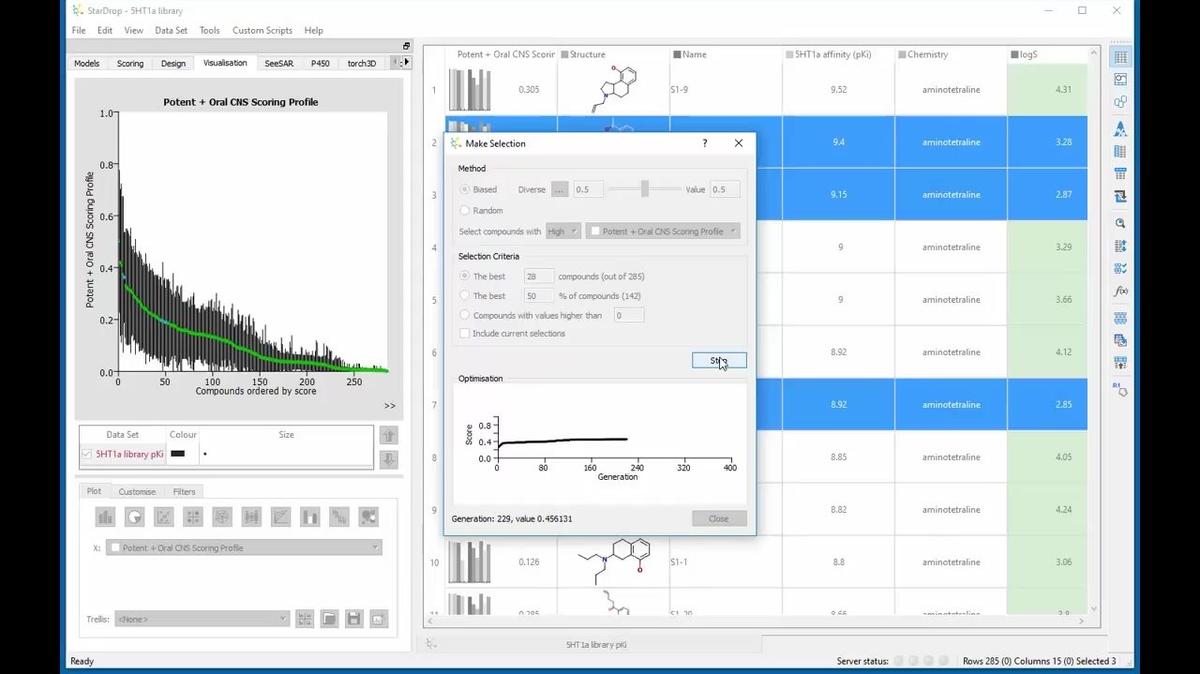
Keeping Track of Selected Compounds
StarDrop's provides a number of ways to help you keep track of compounds you have selected. Take a look at these quick examples...
-
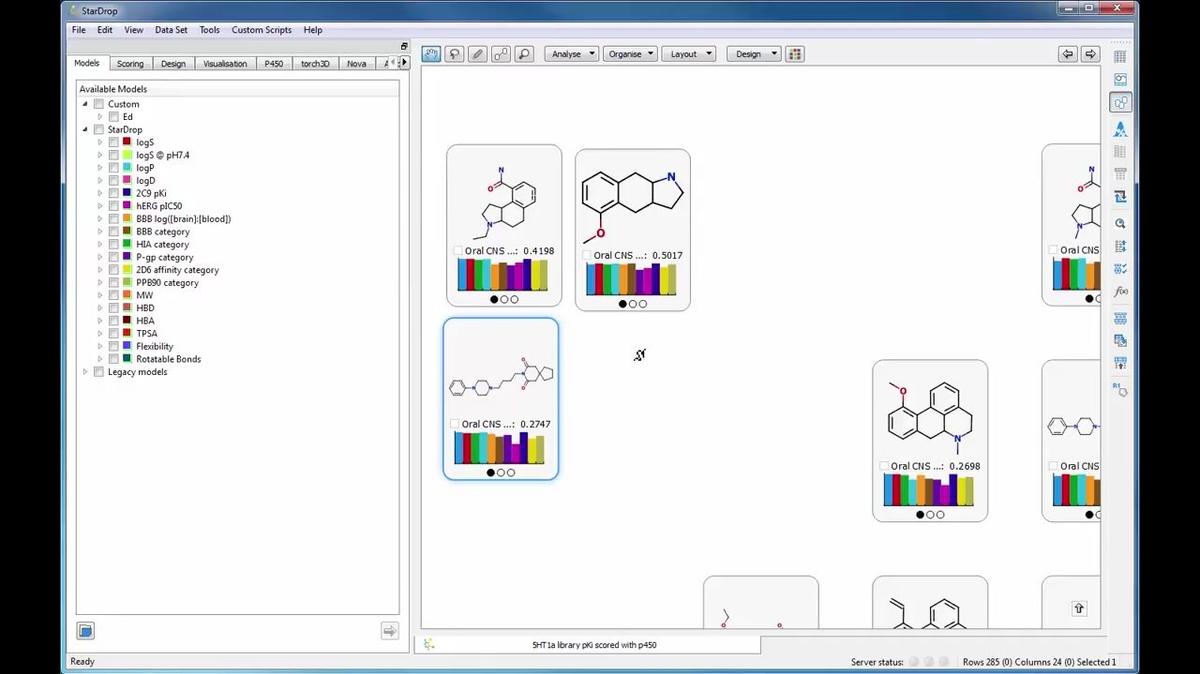
Getting Started in Card View
This short video provides some hints and tips to help you to get started using StarDrop's Card View. The next video in the series gives an introduction to tools for arranging cards in Card View.
-
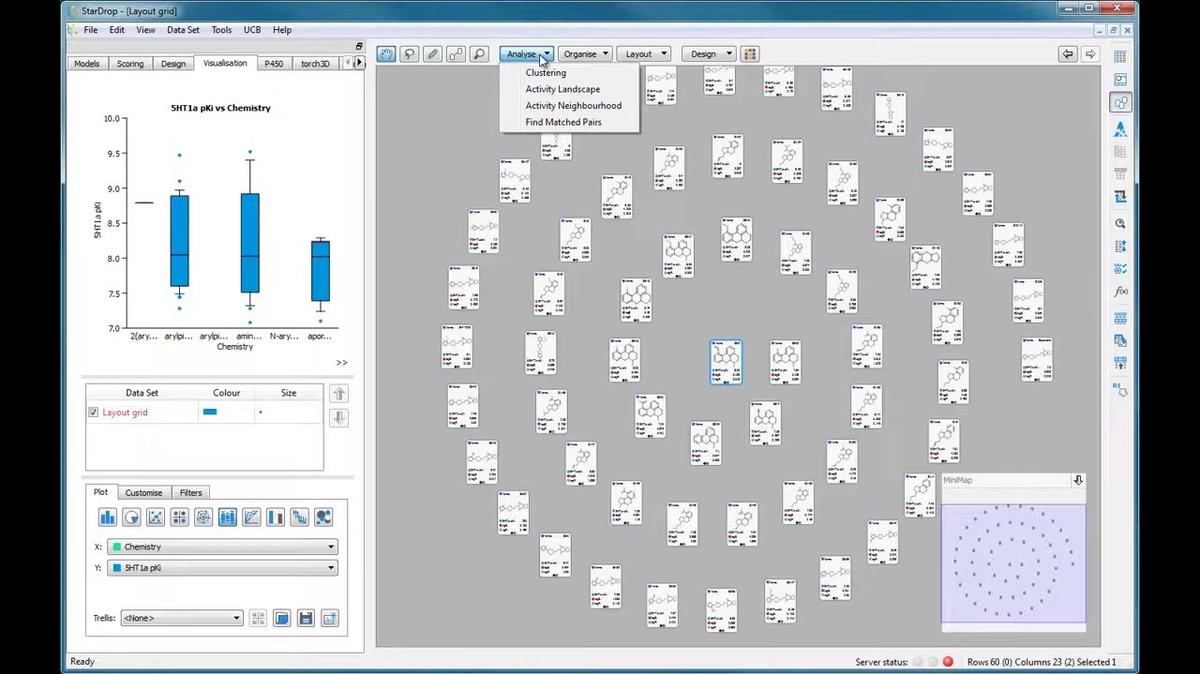
Tools for arranging cards
This short video gives an introduction to the tools provided by StarDrop's Card View that help you to arrange cards for your data set to identify clear patterns and structure-activity relationships.
-
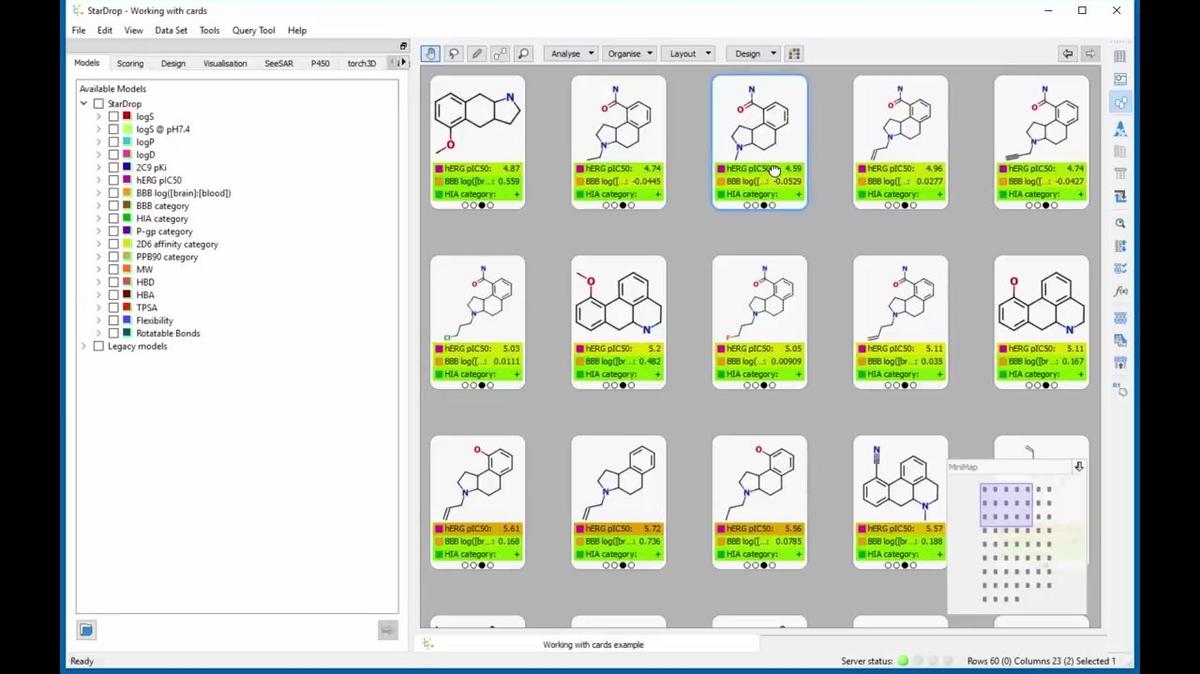
Working with cards
This short video gives an introduction to working with cards in StarDrop's Card View.
-
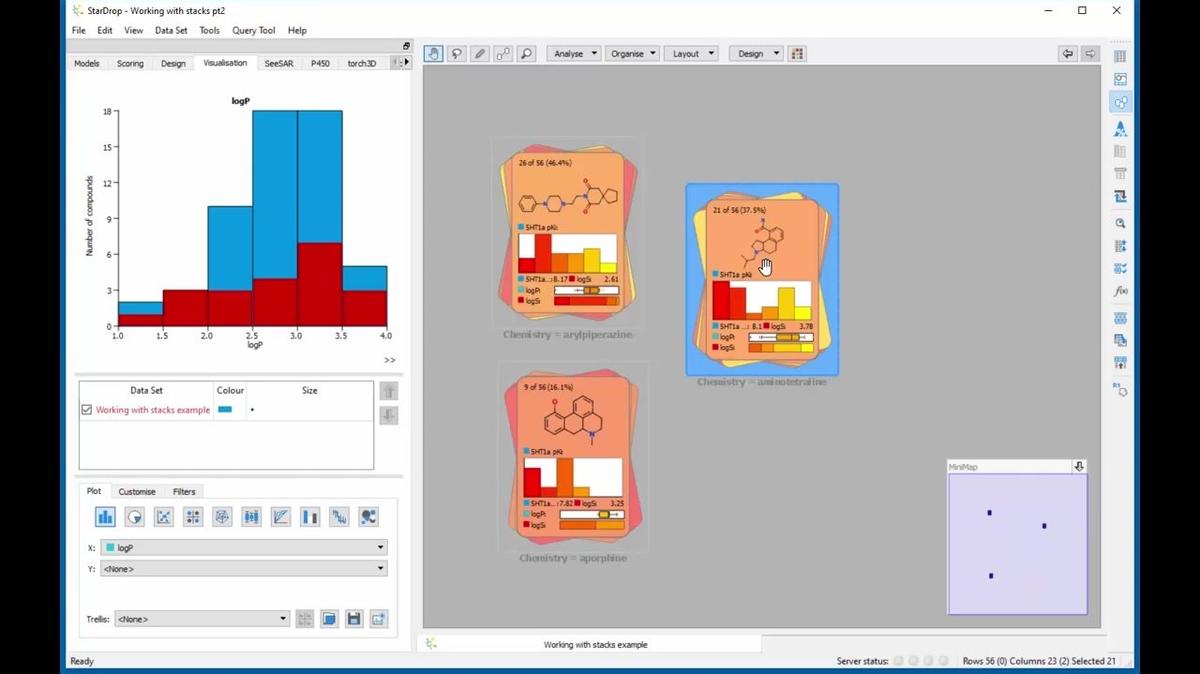
Working with Stacks
This short video gives an introduction to working with stacks in StarDrop's Card View.
-
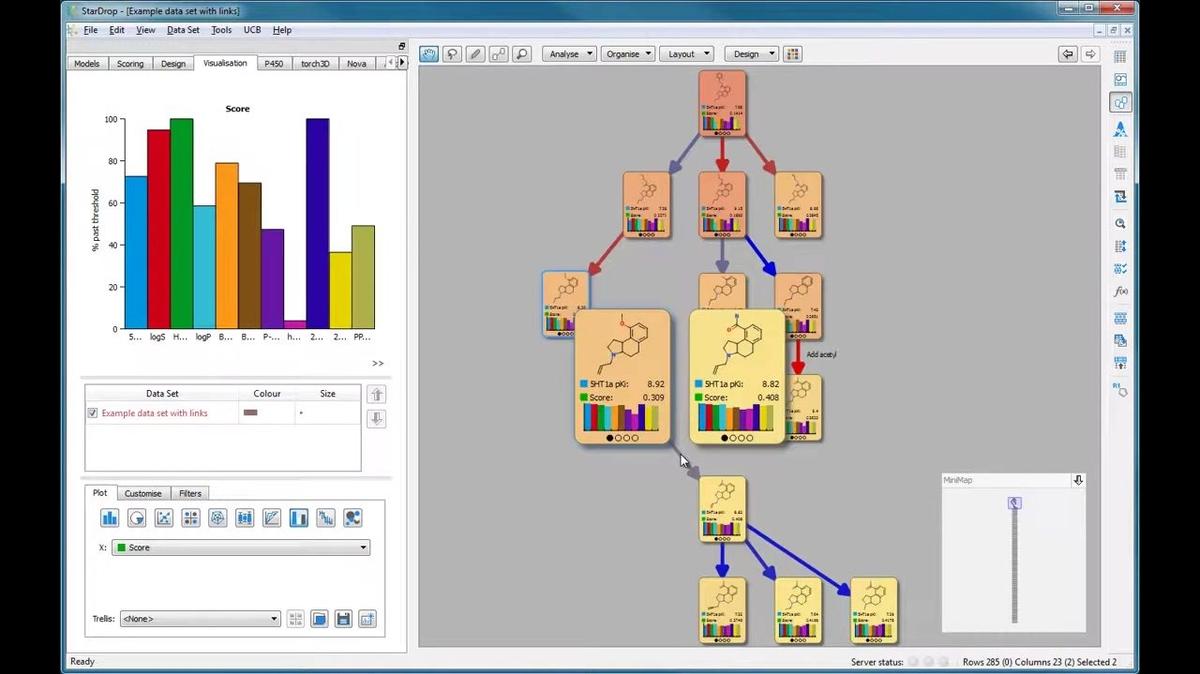
Working with links
This short video gives an introduction to working with links in StarDrop's Card View.
-
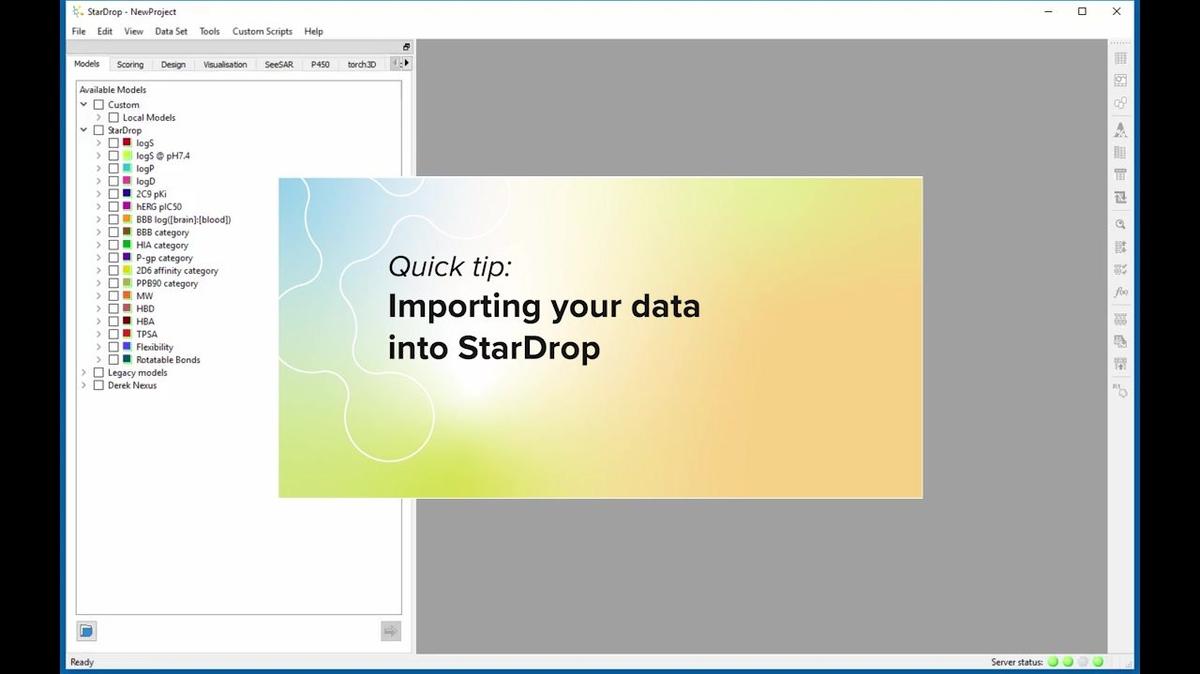
Importing Your Data into StarDrop
This short video illustrates how to import your data into StarDrop from standard file formats, such as SD, SMILES, CSV and text files.
-
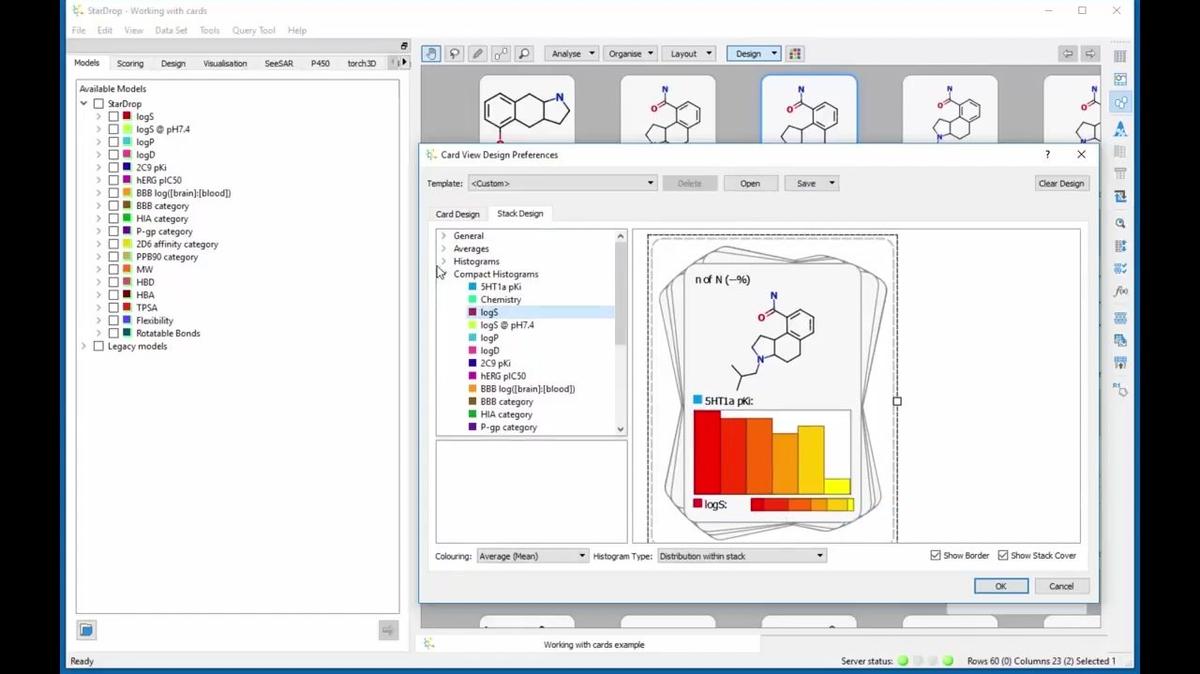
Introduction to Card View Designer
This short video illustrates how to you can create Cards of any dimensions and lay out your data in a flexible format, along with your own titles and labels.
-
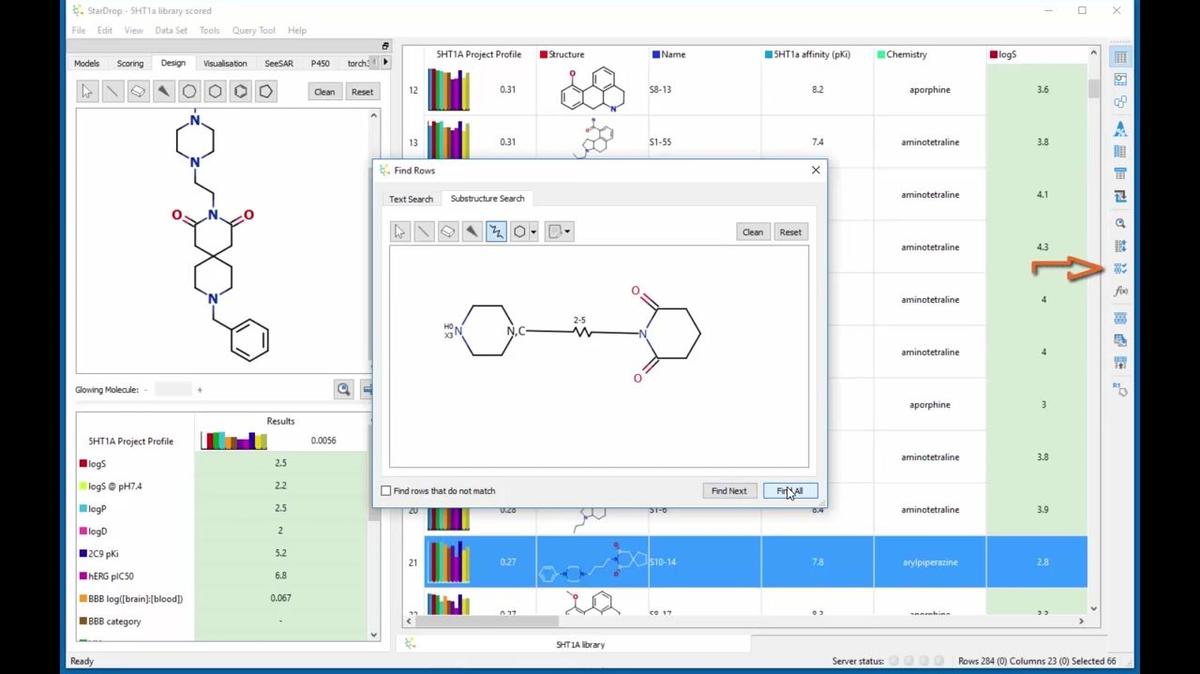
Flexible Substructure Searching
This short video illustrates how to perform flexible substructure searches, including variable atoms, bonds and linkers using StarDrop's Find tool.
-
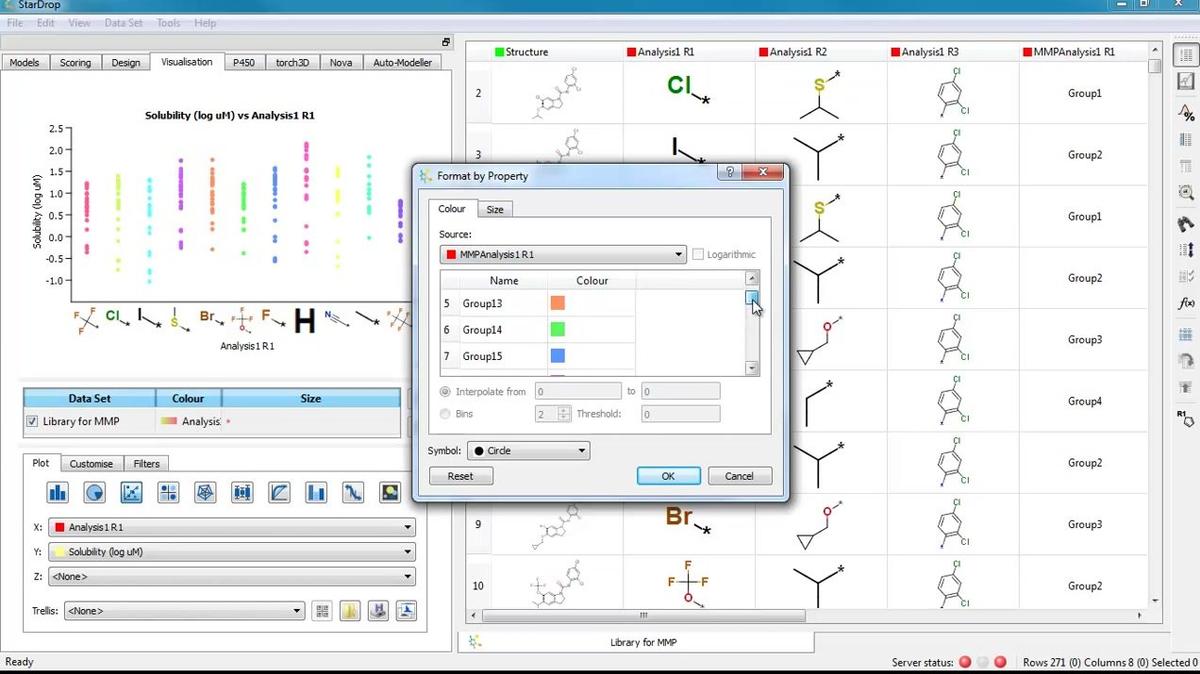
R-group Matched Pairs
This short video illustrates how to perform Matched Molecular Pair Analysis (MMPA) within a chemical series using StarDrop's R-Group analysis tool This is quite a specific form of MMPA and you may also be interested in the short video describing the general MMPA tool in StarDrop and how it can b...
-
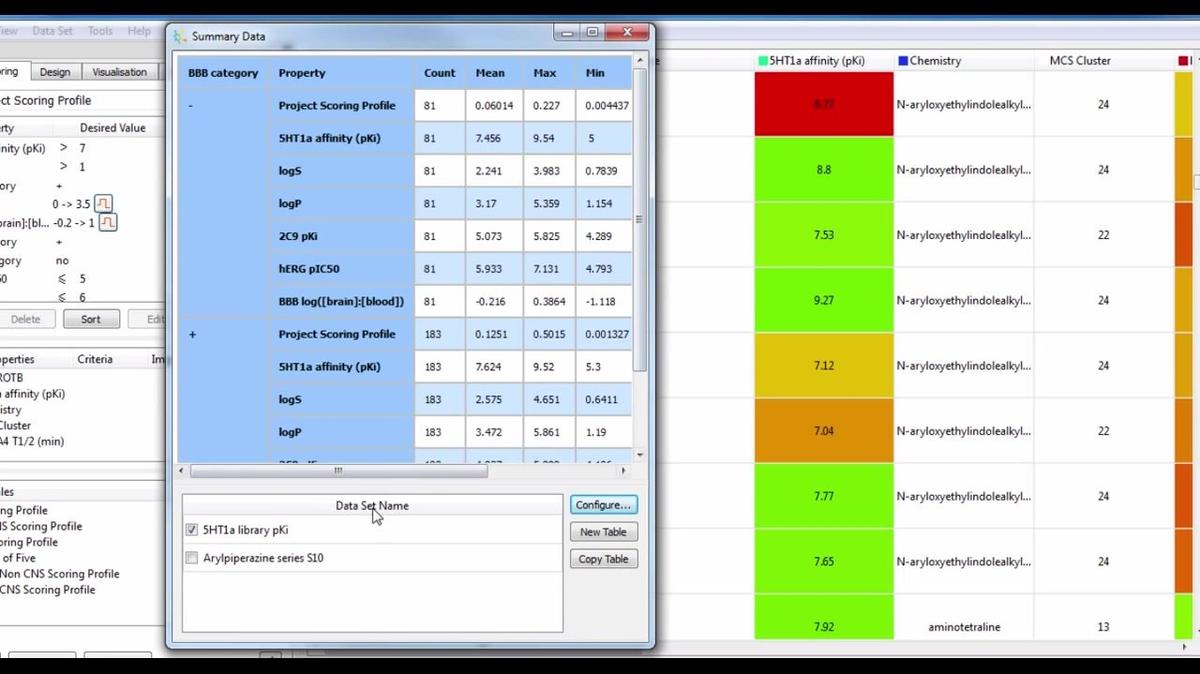
Summary Analysis
StarDrop's Summary tool enables you to quickly see trends across the properties in your data sets. Take a look at this quick introduction...
-
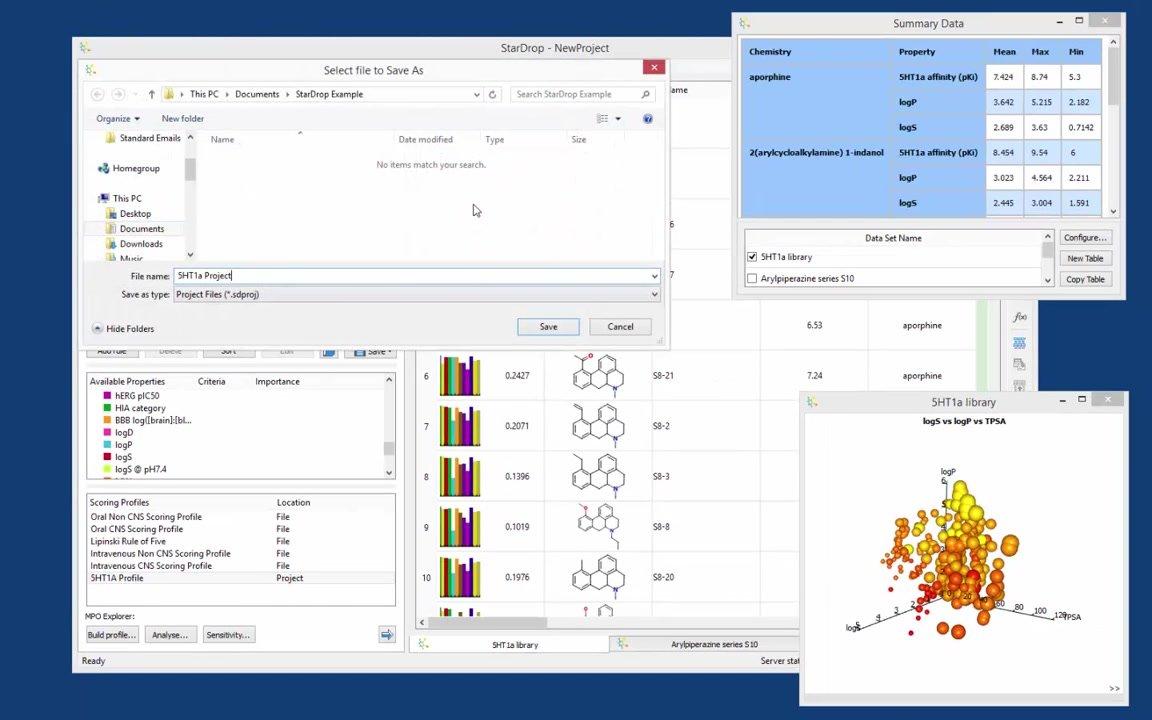
Projects
StarDrop project files enable you to save all of your data sets, visualisations, scoring profiles and templates in a single file making them easy to share and update. Take a look at this quick introduction...
-
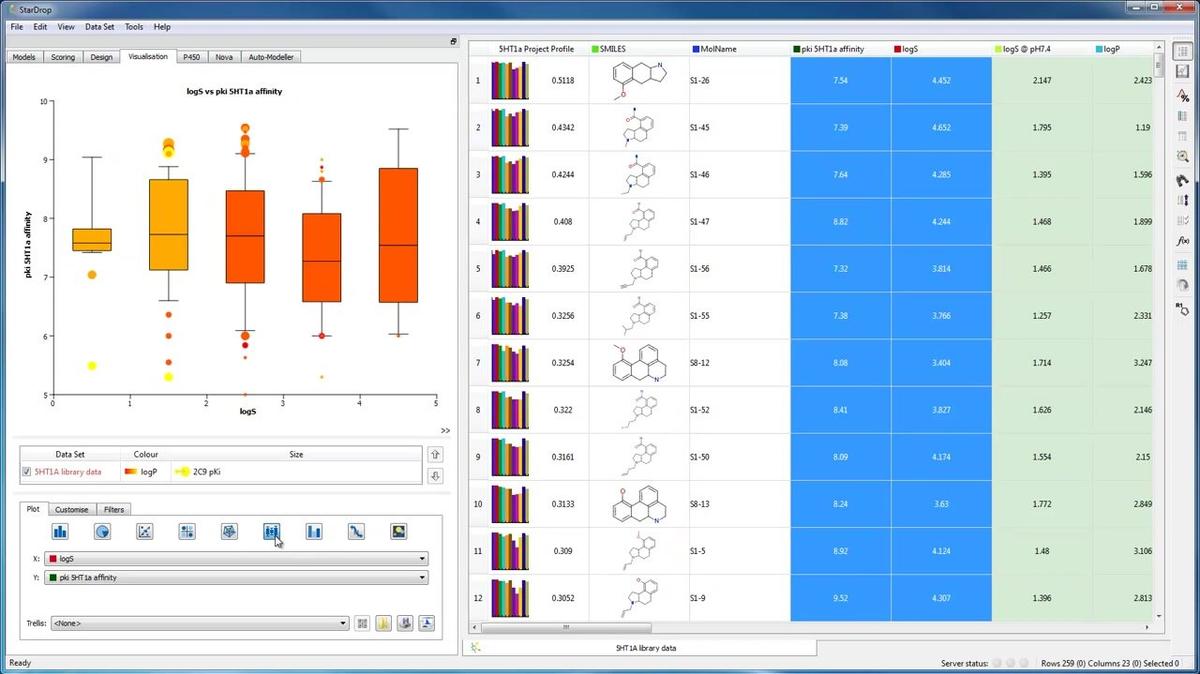
Introduction to data visualisation
This short demo introduces the different types of data visualisations that can be created within StarDrop, including scatter plots, box plots, histograms, radar charts, SAR tables and pie charts.
-

Redesign to Resolve Metabolic Liabilities
In this demo we look at how it's possible to use the StarDrop P450 metabolism models to guide the design of new analogues around a compound with known metabolic liabilities.
-

BIOSTER
This short demo introduces StarDrop's BIOSTER module. The BIOSTER module contains a unique compilation of over 27,000 precedented bioisostere and bioanalogue transformations that can be used by Nova to generate new compound ideas.
-

Building a QSAR Model
In this demo we use the Auto-Modeller to build a QSAR model of some measured data for target affinity. Using this new model we guide the design of a new compound using probabilistic scoring to consider the relative importance of potency alongside ADME properties and then the Glowing Molecule to h...
-

Compound Prioritisation and Selection
In this demo we're going to take a look at how StarDrop can guide the prioritisation and selections of compounds using a combination of in vitro and in silico data. Using StarDrop's probabilistic scoring, data visualisation and selection tools you can see how we can select a diverse set of compou...
-

Introduction to Matched Series Analysis
This short movie gives an introduction to StarDrop's Matched Series Analysis which is part of the Nova module which searches databases of matched molecular series to identify chemical substitutions that are likely to improve target activity.
-

Introduction to Card View
This short video gives a brief introduction to StarDrop's Card View that provides a unique and intuitive approach to working with your compounds and data in the context of a drug discovery project.
-
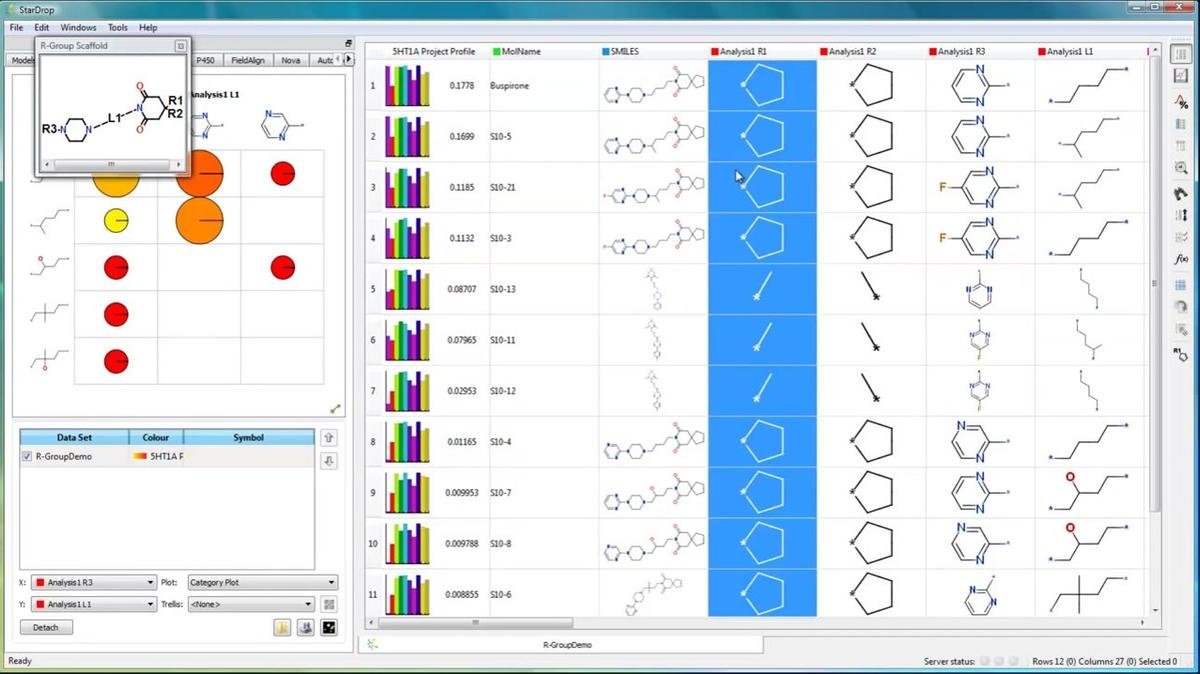
R-Group Analysis
This short demo gives a quick introduction to how StarDrop's R-group analysis functionality can be used to explore the relationships between functional groups at different R-Group positions and a compound's properties. For more information on the scores which are in the example data set, take a l...
-

Library Enumeration
Explore the virtual library design capability as part of StarDrop's Nova module, providing flexible and easy scaffold-based enumeration of a virtual library. As demonstrated in this short video, this allows drug discovery teams to rapidly explore new chemistry ideas.
-

Redesign to Reduce Toxicity Risk
In this demo we look at how it's possible to use the Derek Nexus module with StarDrop to guide the design of new analogues around a compound with predicted toxicity risks using StarDrop's interactive Design tool.
-

Automatic Generation of New Chemistry Ideas
In this demo we take a look at how StarDrop's Nova plug-in module can be used to generate new compound ideas. Starting with three lead compounds you can see how it is possible to generate new ideas which are optimised to have a good balance of both target affinity and ADME properties. For an exam...
-

Addressing Toxicity in Compound Prioritisation and Selection
In this demo we're going to take a look at how toxicity predictions from the Derek Nexus module can be included in StarDrop's Probabilistic Scoring to intuitively balance the reductions of toxicity risk with requirements for a successful drug.
-

torch3D
In this demo we take a look at how StarDrop's torch3D module can be used to compare the molecular fields of compounds with those of a know bioactive in order to assess their potential for biological activity. For more information on the models and scoring used within this demonstration, take a lo...
